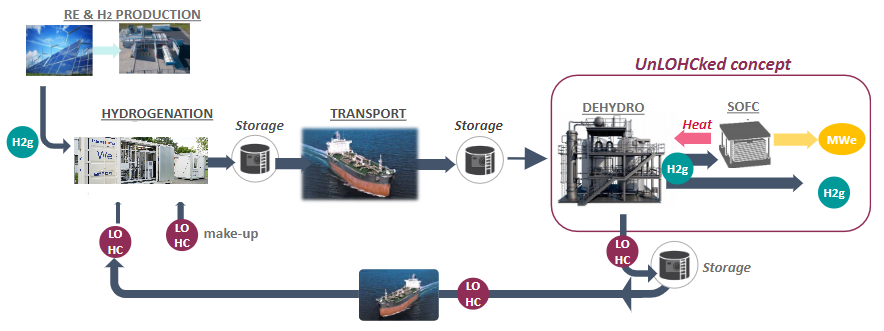The aim of the European Unlohcked project, in which we are involved with our international partners*, is to develop a breakthrough CO2-free technology to convert Liquid Organic Hydrogen Carriers (LOHC) into hydrogen to further generate clean electricity.
As a genuine innovation, this LOHC technology offers increased energy efficiency, high catalyst productivity and stability, and is proving to be sustainable and profitable. To support the development of this technology, and taking full advantage of our expertise in the field, we are involved in this project on two important tasks:
- the multi-scale modelling and design of an efficient reactor for the dehydrogenation reaction, powered by the heat provided by the SOFC ;
- the techno-economic assessment of the process to evaluate the viability of the overall LOHC concept for H2 storage and long-distance transportation.
At the end of the project, the technology will be demonstrated in a demo unit of a LOHC dehydrogenation plant thermally coupled with a solid oxide fuel cell (SOFC), in order to generate hydrogen and renewable electricity.

|
* Universidad del País Vasco (Spain) and North-West University (South Africa), Framatome, HyGear, Heraeus, CNRS - Centre national de la recherche scientifique
More information about LOHC :
LOHCs are nontoxic organic compounds, liquid at ambient conditions, that can store and release hydrogen in their chemical bonds via catalytic reactions. They consist in a couple of hydrogen-poor and hydrogen-rich molecules that can undergo a catalytic hydrogenation to store hydrogen and a catalytic dehydrogenation to release hydrogen. This allows an easy transport and storage of hydrogen in liquid phase.